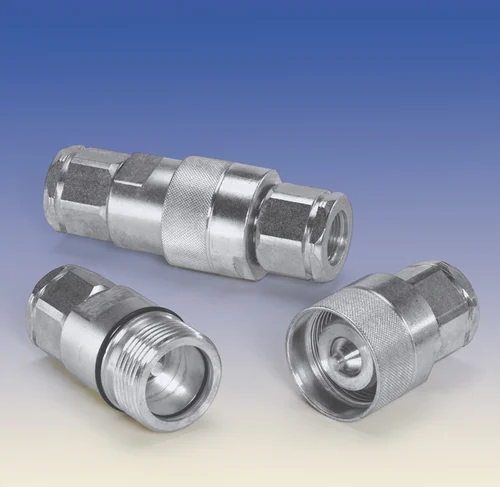In the intricate world of mechanical and structural assemblies, the integrity of connections is paramount. Among these, rod connectors are pivotal in maintaining stability and functionality.
These components, including varieties like round coupling nuts, hex coupling nuts, stainless steel coupling nuts, and aluminum coupling nuts, are integral in various industries.
However, they are susceptible to a common issue known as seizing, which can lead to severe safety hazards and financial losses.
Addressing this problem begins with understanding the importance of quality components from reputable suppliers such as BACO Enterprises, Inc. For a comprehensive range of quality fasteners that mitigate such issues, click here.
The Phenomenon Of Seizure
Seizure of fasteners, a condition where they become immovably locked together, is often due to galling or cold welding of threads. This issue arises when protective oxide layers on surfaces like stainless steel or aluminum are disrupted, causing the metals to fuse under pressure and friction.
The problem is exacerbated by factors such as improper lubrication, incorrect installation, and harsh environmental conditions. Seized fasteners often require destructive methods for removal, leading to additional damage and costs.
Understanding The Basics
Rod coupling nuts, essential in joining and securing threaded rods, are fundamental in construction, machinery, and more. They come in forms like round, offering smooth profiles for certain applications, and hex, which provide greater surface areas for easier tooling.
Stainless steel coupling nuts are favored for their strength and corrosion resistance, vital in harsh environments, while aluminum coupling nuts are preferred for their lightness and resistance to corrosion, though they may be softer and less strong.
These connectors’ role in ensuring structural stability and reliability is crucial, making their proper selection and use fundamental.
Delving Into Causes
Material Selection and Corrosion: Material choice significantly impacts susceptibility to seizing. Stainless steel, known for durability and corrosion resistance, can gall under certain conditions, especially when dry and under high pressure.
Aluminum, while lightweight and resistant to corrosion, can suffer from similar issues due to their softer nature.
Factors like humidity, temperature, and exposure to corrosive elements can exacerbate these issues, increasing the risk of seizure and necessitating careful consideration of material properties in fastener selection.
Mechanical Strain and Stress: Mechanical factors such as over-tightening and uneven load distribution contribute significantly to seizing. Over-tightening can deform threads, leading to increased friction and the potential for galling.
Uneven load distribution can create areas of high pressure, further increasing the likelihood of seizing. Understanding and adhering to proper installation techniques, including torque specifications and load balancing, is crucial in preventing these mechanical issues.
Thermal Effects: Temperature variations can lead to the expansion and contraction of materials, potentially causing them to seize over time.
In environments with significant temperature fluctuations, materials like stainless steel and aluminum can expand or contract, altering the fit of fasteners and leading to a tight or loose condition that can eventually result in seizing.
Understanding these thermal effects and selecting materials and designs that can accommodate such changes is vital for long-term performance.
Prevention And Mitigation Strategies
Material Choice: Selecting the right material is a primary defense against seizing. Stainless steel is often suitable for environments requiring strength and corrosion resistance, while aluminum might be better for applications where weight is a concern.
Understanding specific application requirements and environmental conditions is crucial in making the right choice.
Proper Installation Techniques: Proper installation is critical in preventing seizing. This includes adhering to recommended torque specifications, using the appropriate tools, and ensuring even load distribution.
Educating installers on the importance of these factors and the potential consequences of improper installation can greatly reduce the risk of seizing.
Lubrication and Maintenance: Regular maintenance and appropriate lubrication are key strategies in preventing seizing. Lubricants reduce friction and wear and can protect against corrosion.
Routine inspections can identify early signs of wear or corrosion, allowing for timely intervention before seizing occurs. Establishing and following a maintenance schedule is essential for the longevity and reliability of fasteners.
Innovative Solutions And Alternatives
Advanced Materials and Coatings: The industry has introduced innovative materials and coatings to reduce the likelihood of seizing.
For example, coatings can provide a protective layer between metal surfaces, reducing direct contact and the risk of galling. Surface treatments like nitriding increase hardness and wear resistance, making surfaces less prone to damage and seizing.
Engineering Improvements: Continuous advancements in fastener technology aim to address seizing issues. Engineers develop new designs, materials, and manufacturing techniques to improve performance and reliability.
Innovations like anti-seize compounds, improved thread designs, and alternative materials are all part of the industry’s efforts to overcome the challenges of seized fasteners.
Case Studies And Real-World Applications
Industries worldwide have faced challenges due to seized fasteners. In construction, seized bolts can delay projects and inflate costs. In the automotive sector, seized engine or suspension components can lead to recalls and safety issues.
These case studies provide valuable insights into the impacts of seized fasteners and underscore the importance of correct connector choice, installation, and maintenance.
Seizing of fasteners, particularly rod connectors, is a multifaceted issue with significant consequences. A comprehensive understanding and proactive approach are essential. This includes careful material selection, proper installation techniques, regular maintenance, and staying informed about industry innovations.
Each step contributes to the overall reliability and safety of mechanical and structural assemblies. As technology evolves, the industry looks forward to more resilient and reliable fastening solutions.
